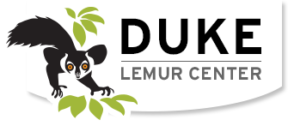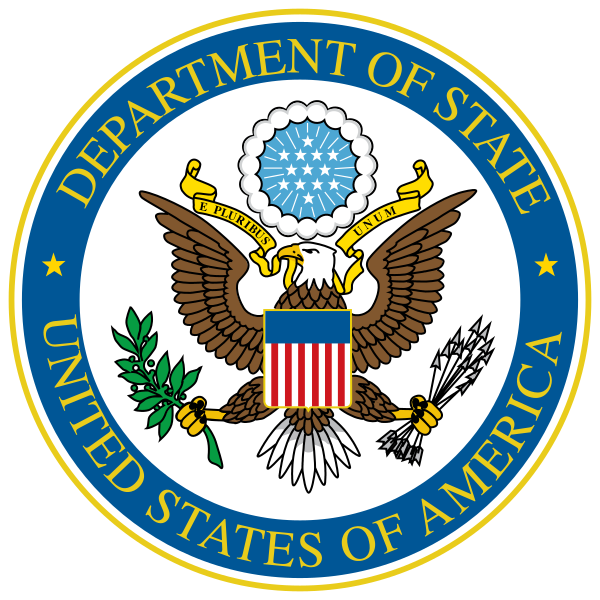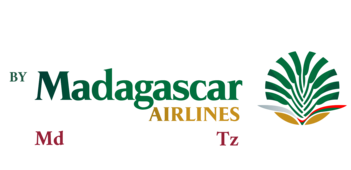Madagascar is an island and country located east of the mainland of Africa, separated from it by the Strait of Mozambique. It is the fourth largest island in the world after Greenland, New Guinea and Borneo.
History of Madagascar
The first inhabitants of Madagascar may not have been Africans, but they were Malays and Indonesians, who lived 6400 km away. The vast majority of the population is descended from these people. It is believed that these people eventually reached Madagascar via the coasts of East Africa. They also brought their own food, which is why rice is still the main food of the Malagasy today. After a turbulent history (with many massacres and wars), the population is divided into 18 tribes, with the main tribe being the Merina.
The first Europeans arrived in Madagascar under the Portuguese flag in the year 1500. The existence of Madagascar had been recorded long before these Europeans arrived by Marco Polo and by Arab cartographers. In the centuries that followed, the Portuguese, Dutch and English often tried in vain to settle permanently on the island. Frederik de Houtman visited the island on his trip to Java and noted the linguistic similarity between the two areas in his Spraeck ende word book in the Malay and Madagascan languages, published in 1603.
Three kingdoms gradually emerged on Madagascar: Menabe in the west, Zana-Malata in the east and Imerina on the central plateau. In the late 16th century, the Menabe conquered large tracts of land north along the coast. Under King Andriamisara I, the eastern highlands were also occupied.
His successor Andriandahifotsy wanted to put the entire south and east of Madagascar under his rule, but this was not entirely successful. Later, during the reign of Andriamandisoarivo (1685-1712), his disinherited son founded the kingdom of Boina, which lasted until the beginning of the 19th century. At the beginning of the 18th century, Île Sainte-Marie became the headquarters of the pirates.
Ratsimilaho was the son of an English pirate and a Malagasy princess. He managed to merge the Zana-Malatas and some rival tribes into the empire of Betsimisaraka. In 1750, Ratsimilaho’s daughter Bety married a French corporal, Jean-Onésime Filet. As a wedding gift they received the island of Ile Sainte Marie. After Ratsimilaho’s death, Bety ceded the island to the French.
Her son Zanahary took over the kingdom from her, but it soon fell apart under his rule. Towards the end of the 18th century, the Hungarian adventurer Móric Beňovský, with French support, installed himself in Antongil and proclaimed himself Emperor of Madagascar. In 1786 he was deposed by French troops.
In 1787, Chief Ramboasalama ruled the Merina tribe and managed to align all members of the tribe. Calling himself Andrianampoinimerina the Merina became the leading tribe of Madagascar, controlling half the island at that time. In 1817, the indigenous Merina people established the Kingdom of Imerina in the Central Highlands. Over time, this kingdom managed to conquer large parts of the island.
In 1897, the Kingdom of Madagascar, after having been part of the French Protectorate of Madagascar since 1882, was conquered by French troops and annexed to France as the colony of French Madagascar. In the interwar period and early in World War II, the Madagascar Plan was examined for feasibility. The plan envisaged shipping all Jews from Western Europe to Madagascar. From May 5, 1942 to November 6, 1942, the Battle of Madagascar (Operation Ironclad) took place in which the Allies took control of Madagascar, occupied by Vichy France. In 1947, the Malagasy Revolt was fought between the French and the Malagasy, with the latter losing the revolt.
In 1960, the country gained its independence from France as the Malagasy Republic. Philibert Tsiranana became the first president. In the early 1970s, the military took over power with the aim of establishing a socialist system in Madagascar. The great leader of the Malagasy Revolution was the “Red Admiral” Didier Ratsiraka who founded the Democratic Republic of Madagascar in 1975. However, the socialist goals were not achieved. The economy then collapsed.
In 1982, the IMF imposed a structural financial/economic reform program on the government in exchange for financial support. Democracy was restored in 1991. Albert Zafy came to power in the 1993 elections. In 1997, Didier Ratsiraka returned as Madagascar’s head of state – this time as a democratically elected president. However, its initial popularity declined at the beginning of the new millennium as the economic situation continued to be bad. After Marc Ravalomanana won the elections, a civil war broke out between his supporters and those of Ratsiraka. Ratsiraka accused Ravalomanana of electoral fraud. In the summer of 2002, the civil war came to an end and Ravalomanana was finally able to start his term of office.
In early 2009, Ravalomanana’s presidency was challenged by Andry Rajoelina, the 34-year-old mayor of Antananarivo. This happened amid large-scale opposition protests and disturbances in the city. Rajoelina rebelled because of the president’s allegedly autocratic and corrupt style of government. On January 31, he even declared that he had taken control of the country. The following week he was “fired” by the government and a confidant of the president was put forward in his place. Following this decision, President Ravalomanana handed over power to Admiral Ramaroson to form a military government. However, Ramaroson still supported Rajoelina and immediately handed over power to him. A day later, the Supreme Court of Madagascar recognized the legality of the transfer of power.
Elections were held in 2013 under great international pressure and sanctions, in which both the former president and the then president were excluded from participation.
Geography of Madagascar
The distance from north to south is about 1,580 km and from east to west about 579 km. The highest point is the Maromokotro with an altitude of 2,876 meters.
The island can be divided into the following geographical areas:
– Central Madagascar: The Central Highlands: 800–1500 m high, steppe area, high plains: reddish, rock formations. Madagascar is also called “The Red Island”.
– Eastern Madagascar: succession: steep coasts with trees, deforested parts, small scrub, swampy parts that diverge into lagoons and finally end in a narrow coastal strip 50 km wide.
– Western Madagascar: large alluvial plains, and many sedimentary plains, limestone plateau.
– Southern Madagascar: dry plains (except east coast, which gets rain)
Until about 110 million years ago, Madagascar was part of Gondwanaland. The western side was attached to Africa at the current Somali coast. The east coast bordered India. The Madagascar-Seychelles-India fragment then separated from Africa and drifted some distance to the east. Madagascar remained there, but the Seychelles and India began a long journey to the northeast around 90 million years ago, where India has been attached to Asia since the Miocene.
Administrative division of Madagascar
Madagascar has been divided into 22 regions since 2009, which are further subdivided into 111 districts. Previously, the island was divided into six autonomous provinces. Madagascar has 6 cities with an estimated population of more than 100,000. The capital Antananarivo is by far the largest city in terms of population. The ten largest cities in descending order are Antananarivo, Toamasina, Antsirabe, Fianarantsoa, Mahajanga, Toliara, Antsiranana, Antaniphotsy, Ambovombe and Amparafaravola.
Flora and fauna of Madagascar
Madagascar has a unique flora and fauna that has developed largely independently of mainland Africa, due to its isolation as an island for tens of millions of years. The most famous animal group is that of the lemurs, a varied group of prosimians that only occurs on the island.
Other well-known animals that only live on Madagascar are the Madagascar day geckos, a genus of brightly colored lizards, the comet tail butterfly, the stilt rails, the tenrecs and the fossa, the largest native predatory mammal. A large number of unique species of chameleons can also be found on the island. Species from the genus Furcifer are also known as Madagascar chameleons. The national trees of Madagascar are the baobab and the traveler’s tree. A well-known tree from Madagascar that is planted worldwide in the tropics is the flamboyant. The well-known houseplant Dracaena marginata also originates from Madagascar. In 2008, the Madagascar endemic palm Tahina spectabilis was first described.
Madagascar also has a number of unique insect species. Not unique, but massively present is the red migratory locust, which causes enormous plagues of locusts.
Demographics of Madagascar
The main population group are the Malagasy, coming from Southeast Asia. The main ethnic groups or tribes within it are the Merina around the capital, the Betsileo to the south, the Betsimisaraka to the northeast and the Sakalava to the west. In total there are more than twenty ethnic groups, subgroups and clans. However, this division is mainly based on the kingdoms founded in the past and internal conflicts and is therefore not recognized by all scientists.
The estimated life expectancy is 64 years for men and 67 years for women. From an ethnological point of view, the population can be considered as a mixture of Malay and African elements. Later came the Arab traders who introduced Islam, especially in the north. Physiognomically, the predominance of the Malay element is less than linguistically. A small part of the population is formed by descendants of immigrants, such as Europeans, Indians, Creoles, Comorians, and Chinese.
Languages of Madagascar
In fact, different dialects of the same language, Malagasy, are spoken in Madagascar. The official form of Malagasy is Merina, a dialect of the Plateau Malagasi. The language has an obvious affinity with the Malayo-Polynesian branch of the Austronesian language, especially with the language of the Ma’anjan and the Dayaks of the middle and upper reaches of the river Barito in Borneo, and belongs to them. However, there are also clear influences from the Bantu languages.
In addition to the ten Malagasy languages, Comorian and French are also counted as important languages in Madagascar. Although French is an official language and played a major role during French colonization, this Indo-European language is spoken by only 1 to 2 percent of the population, mainly by the upper class. French is the most widely taught on the coast, as people there prefer to avoid the dominance of the Merina culture.
Religion of Madagascar
The main religions are 52% animistic religions (including ancestor and amulet worship), 41% Christianity and 7% Islam. Many Christians also venerate ancestors, although this veneration was vehemently opposed by the early missionaries. There are many fady, rules and customs that differ greatly from region to region. For example, it is strictly forbidden to photograph graves, unwitting tourists can get into trouble as a result. Descendants of immigrants often adhere to their original religions. For example, some Chinese Malagasy still practice the Chinese folk religion and in the capital there is a temple of the Chinese general Guan Yu.
Housing in Madagascar
The houses in the countryside are unheated and built with local materials. There is a fireplace for cooking with wood, with the smoke escaping through an open window. Cooking is often done with a wood fire, even in some restaurants.
Economy of Madagascar
Madagascar is one of the poorest countries in the world. About 93% of the population live on less than two dollars a day. Economic growth has been below population growth for decades, as a result of which the population has only become poorer. In the period 1960 – 2013, the population increased by 2.9% per year while the economy grew by only 1.8%. The population increased fivefold from 5 million in 1960 to 23 million in 2013 and half are under 20 years old.
The island is struggling with difficult climatic conditions, such as cyclones and drought, and plagues of locusts, but also with a government that does not function well. Political instability, corruption and the strong focus on the short term make the country less attractive for domestic and foreign investors. The country ranks 163rd at the bottom, out of 189 countries in total, on the list of most competitive countries. Besides agriculture, mining is an important economic activity.
Agriculture, industry and trade of Madagascar
Coffee beans are the largest source of income for Malagasy farmers, followed by cassava, vanilla and rice. The main exports are coffee, vanilla, shellfish, sugar, cotton fabrics, chromite and petroleum products. Gross domestic product per capita (PPP) is $1,000 (2008 estimate).
In northeastern Madagascar, about 80% of the world’s vanilla is produced. The very high price of vanilla (worth more than silver), the poverty, the corruption and poor law enforcement make the harvest very attractive to thieves. After manual fertilization, the vanilla plants are closely guarded by the farmers and militias. The law is regularly taken into their own hands and caught vanilla thieves are murdered by local militias.
Plagues of locusts in Madagascar
Madagascar has been regularly plagued by enormous plagues of locusts for a long time. These are plagues of the red migratory locust, which can travel up to 100 km per day. A plague involves billions of animals, which reproduce every two months and can continue over several years. Each insect can eat up to two grams of food daily, causing damage to 100,000 tons of plants per day. As a result, 40 to 100% of the harvest can be destroyed. A plague from the 1950s lasted no less than 17 years. In 1997, a five-year plague began. The most recent plague started in 2010 and reached a peak in 2013, when a quarter of the food – 630,000 tons of rice – was destroyed. This plague continued until 2016. Due to money problems, among other things, too few insecticides are used, so that the control of the pest is insufficient.
Gemstones
Madagascar’s gemstones are an important export product and are mined in various places, including the former tourist resort of Andranondambo. Due to the poverty, the many illegal mines, the many intermediaries, this mining industry has acquired an unsafe reputation over the years. The atmosphere around the important mining towns is often associated with the American Gold rush. Conflicts over land ownership often lead to fierce conflicts between rival villages. In 2014, Andranondambo was destroyed and massacred by the residents of a neighboring village.
Silk, paper and crafts
In Ambalavao and the surrounding area, the silk moth caterpillar cocoons are processed into silk fibers. Madagascar has a long tradition of silk production and endemic silkworms, including Borocera madagascariensis and Borocera cajani. In addition, artisanal paper and various products are made from zebu horns, hand-woven raffia fibers and metal in Ambalavao.
Currency of Madagascar
The monetary unit of Madagascar has been the Ariary (MGA) since 2005, before that it was the Malagasy franc (MGF). Due to the high inflation, the banknotes have large face values and the coins have almost disappeared. The currency cannot be traded abroad and it is forbidden to export money from Madagascar.
Poverty
According to the United Nations Development Programme, in Madagascar 76.96% of the population lived in poverty and 81.29% lived below the poverty line of USD 1.25 a day (2008/09). Poverty forces people to be very creative, to reuse and recycle all kinds of objects/materials and to do a lot of planting.
Transportation in Madagascar
Madagascar has one main road across the island with a few branches. This road, successively the N6, N4 and N7, runs from the northern tip of the island (Antsiranana) via Ambondromamy, the capital Antananarivo, Fianarantsoa, and Ambovombe to Tulear near the southeastern tip. The main branches are from Ambondromamy to Mahajanga on the west coast, from the capital to Toamasina (Tamatave) on the east coast and from Ihosy to Toliara on the west coast. Only the main road and some major branches are paved and in reasonable condition (with some potholes here and there). The other roads are in poor condition and only passable by 4×4 vehicles and bush taxis. Most passenger transport takes place in fully packed minibuses. Local transportation is mainly by foot, bicycle, bullock carts, local bus lines, hand-pushed carts and rickshaws.
Madagascar has two meter gauge railway networks. A network of three railway lines connects Antananarivo with Toamasina, the country’s main port, and with Antsirabe and Ambatosoratra. These northern lines are operated by Madarail, a subsidiary of the French-South African-Belgian company Comazar. There is a passenger service to open up poorly accessible regions in the east: Ambatondrazaka – Moramanga – Toamasina.
In the south there is a separate railway line from Manakara on the east coast to Fianarantsoa; the Fianarantsoa-Côte Est (FCE) railway line. Only this railway has daily passenger traffic, as there are no parallel roads on this route. The construction of this railway line started in 1926 and the railway line was put into service in 1936. The planned connecting railway line with the rail network in the north, Antsirabe – Fianarantsoa, was never built.
Only freight trains run in the Northern rail network, mainly between the capital Antsiranana and the port on the east coast.













